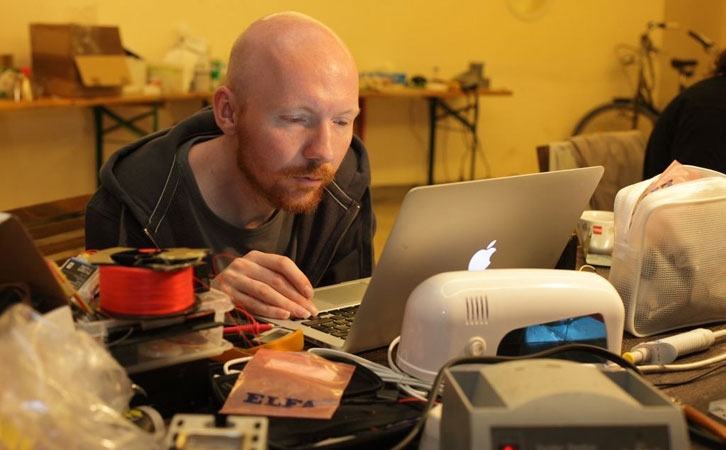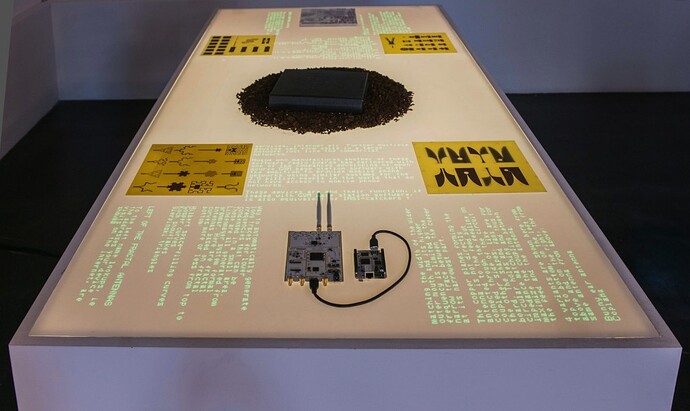When I visited Berlin-based artist and hacker Bengt Sjölen’s studio earlier this week he was developing the hardware for of OpenDrop: an open source digital platform for controlling small droplets of liquids using electro-wetting technology. It struck me that we ought to be looking at open wetware and synthetic biohacking in Opencare. Because there is a lot of scope for DIY and citizen science to actually make advances in developing new care solutions. There are many areas where this could help us to solve pressing problems like antibiotics resistance.
Bengt mentioned an experimental initiative to use some of the properties of silk produced from recombinant bacteria to break quorum sensing. This means you break cell-cell communication within and across bacterial species. It matters because this is a contributing factor to a number of clinically relevant things like making harmless bacteria produce enzymes which attack host tissues, produce toxins, stick to hosts and protect themselves while outside hosts. It may also be a way to break their antibiotic resistence….
The reasoning is that antibiotics typically kill or prevent proliferation of bacteria by targeting biomolecules involved in such essential processes as cell wall synthesis, DNA proliferation, or protein synthesis. Treating large populations of bacteria with such agents inevitably selects for a few resistant mutant cells. These proliferate, mutate further, and give rise to antibiotic resistant populations. So you want to get at the entire propulation and since the ability to communicate with one another affects behavior of the entire community…
What makes these kinds of intiatives especially interesting is that they are being done in hackerspaces and garages using equipment that anyone can put together from recycled materials.
There are already examples where unleashing scientific experimentation amongst the citizenry at large has exceeded expectations.The Malaria Box was an experimental initiative in which 400 diverse compounds with antimalarial activity were distributed in a bid to catalyse drug discovery and research for neglected diseases such as malaria. At a recent medical conference I heard that this initative resulted in several breakthroughs and a number of patents shortly after it was launched.
I’ve only begun to scratch at the surface and have come across the Registry of Standard Biological Parts - a growing collection of genetic parts use for building biological devices and systems and IGEM (“where future life scientists go to get their freak on”). You can see the mind boggling list of what participants have come up with here (click on “team abstracts” from previous iGem competitions here).
What could be achieved if many more people were engaging in this kind of open experimentation? How can existing care initiatives better achieve their goals in collaboration with their peers doing exciting work in open science and technologies?
Join us for OpenVillage [was OPENandChange] for this kind of project development sprint to explore how open science and technologies can improve your community care-related project! We’re mounting a collective funding application and you’ll get to work with brilliant scientists and your peers from different fields, while moving your project forward. We’re also going on a tour in several cities in Europe this September and you can drop by!
It’s first come first served, so don’t wait or risk missing out!
Image credit: unknown, sourced from the Human Futures website

